Yugoslavia Express
in a discussion with the photographer Roberto Conte, who discovered the modernism of Yugoslavia during his 9000 km photo trip.
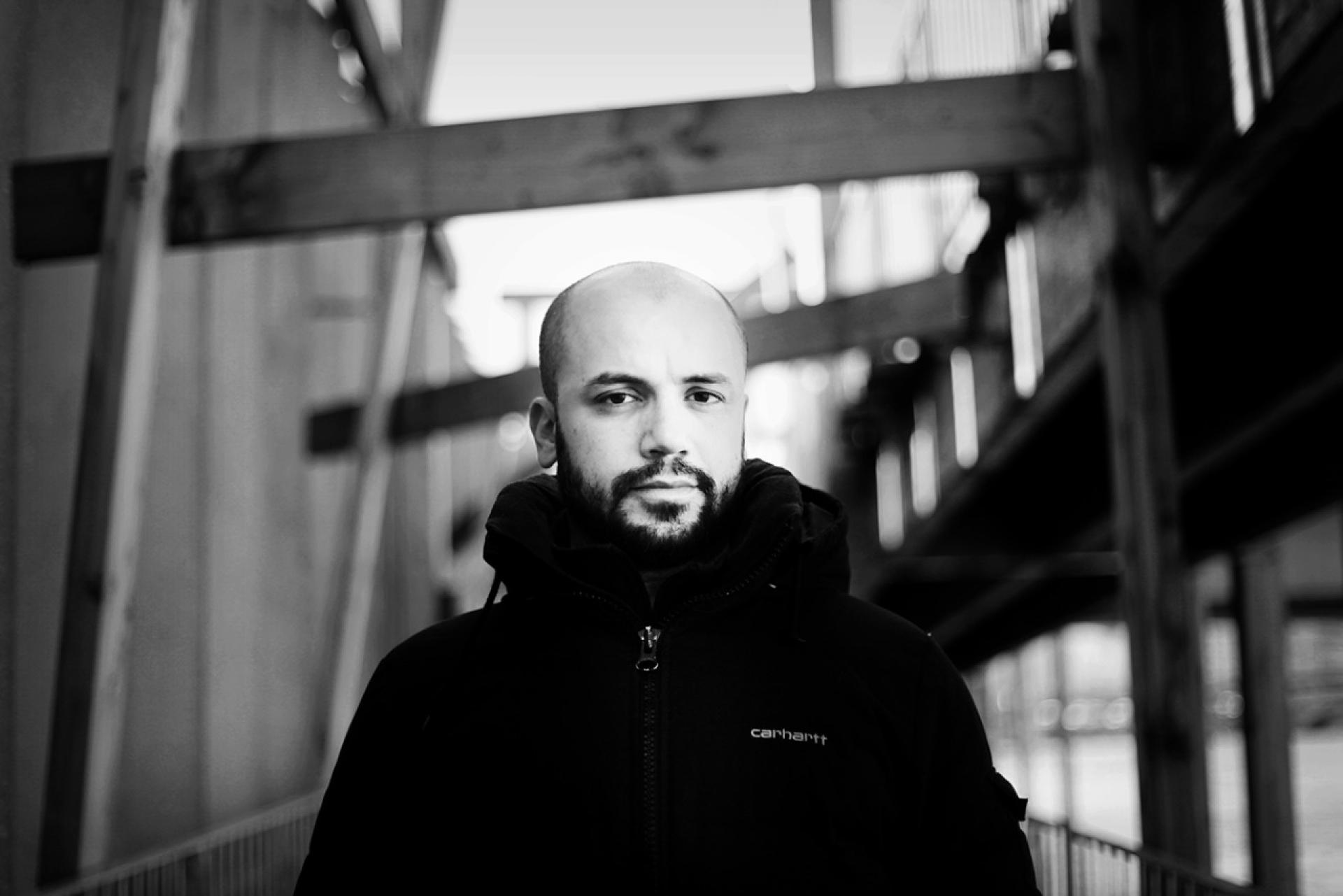
Roberto Conte. | Portrait Photo © Melania Avanzato
Roberto, why is an Italian, Western guy interested in Yugoslavia National Liberation struggle monuments from the WWII?
RC: As an architecture photographer I work a lot with the post-war modernist architecture. I soon realized that a former neighbor nation of my country was literally disseminated by very interesting structures, rather expressionist but with a more modern appeal, with some extremely interesting solutions or design proposals with so many names that would deserved to be known more and that is the worthy purpose of many publications and exhibitions like the project organized by Architectuul. I didn’t know much about Yugoslavia in general, despite the geographical proximity.
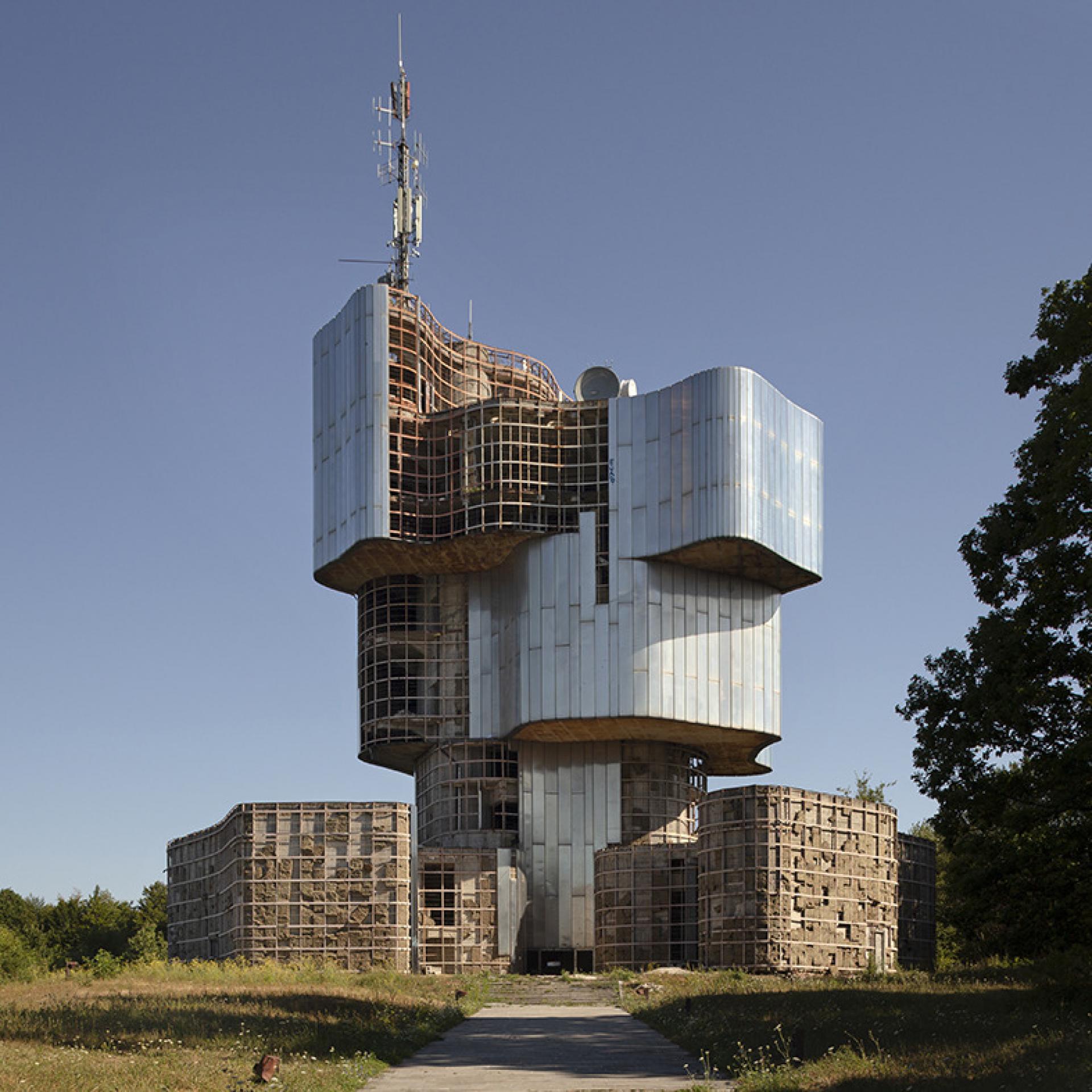
Monument to the Uprising of the People of Banija and Kordun (1971-1981) in Petrova Gora, Croatia by Berislav Šerbetić | Photo © Roberto Conte
My first trip to Belgrade was in 2015, followed by a big tour in 2017. One thing, that impressed me very much, is the locations of most of memorials and monuments strictly tied to the places were important and often painful historical events took places and not just a way to celebrate those people from the distance, like in the main cities itself. It’s really a strong connection with the genius loci, the spirit of the place, and that gives a totally different read to these monuments and, of course, a totally different approach about the preservation of them.

Korčanica Memorial Complex (1975-79) by Ljubomir Denković on Grmeč mountain in Bosnia and Herzegovina | Photo © Roberto Conte
For example, just to mention two of the most famous spomeniks, I would like to mention the monuments in Petrova Gora, Croatia, and in Grmeč, Bosnia and Herzegovina. They both remember episodes of resistance dating back to WWII and located in the very places where things happened, and that gives a lot to them. The first is located on a hill and the surreal silence of the area is just broken by the low buzz of the repeaters/signal amplifiers put on the top of it. The second lies literally in the middle of the forest, in this case with the only buzz of mosquitos. As a person interested in the topics architecture, memory and time it’s strange to see them.
On your trip map are also many other sites, not only monuments, how did the research started and what was the context of your research?
RC: My very first trip was in Belgrade, were I explored the city a lot with the focus on the suburbs. I was totally surprised to see the Genex Tower as well as the whole New Belgrade, but also the Rudo Buildings, the now famous Toblerone in Karaburma and so many more. Despite the conditions of some of them, while some are in way better shape that many public housing complexes in Italy, I realized that in those years there was a genuine push in providing a real and modern home to many people that were moving to a fast growing city on a scale that I had never seen before.
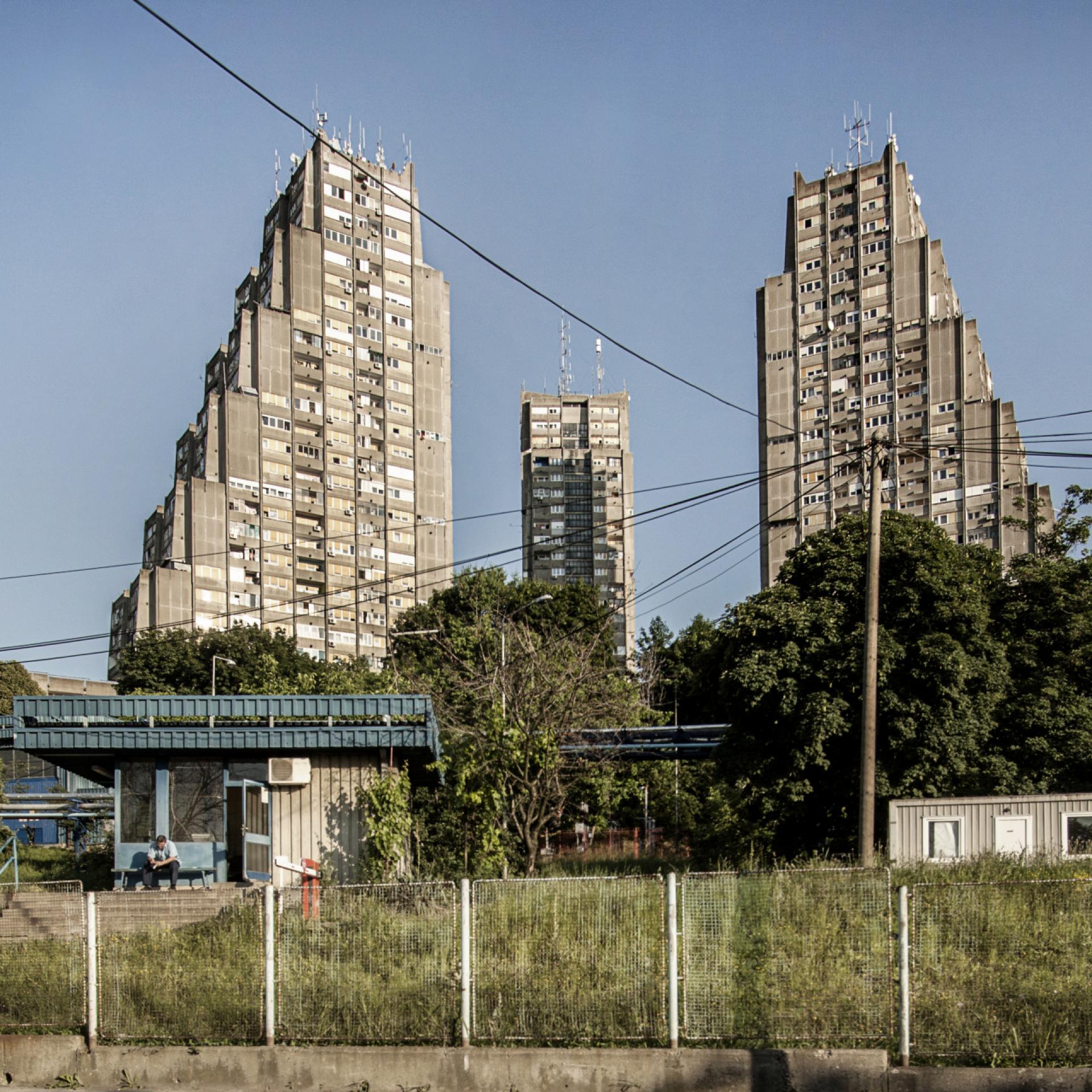
Konjarnik neighborhood (1972-75), New Belgrade | Photo © Roberto Conte
On top of that, many buildings related to leisure activities, such as the 25 May Sport Complex, the Museum of Contemporary Art, the Aeronautical Museum or the Pionir Sport Complex were designed in a very innovative way and a complementary feature in this idea of modern city and modern urban citizen. After that trip I wanted to discover more, therefor I started to research and read more where I broadened my interest also to the memorials for the National liberation struggle of the WWII.
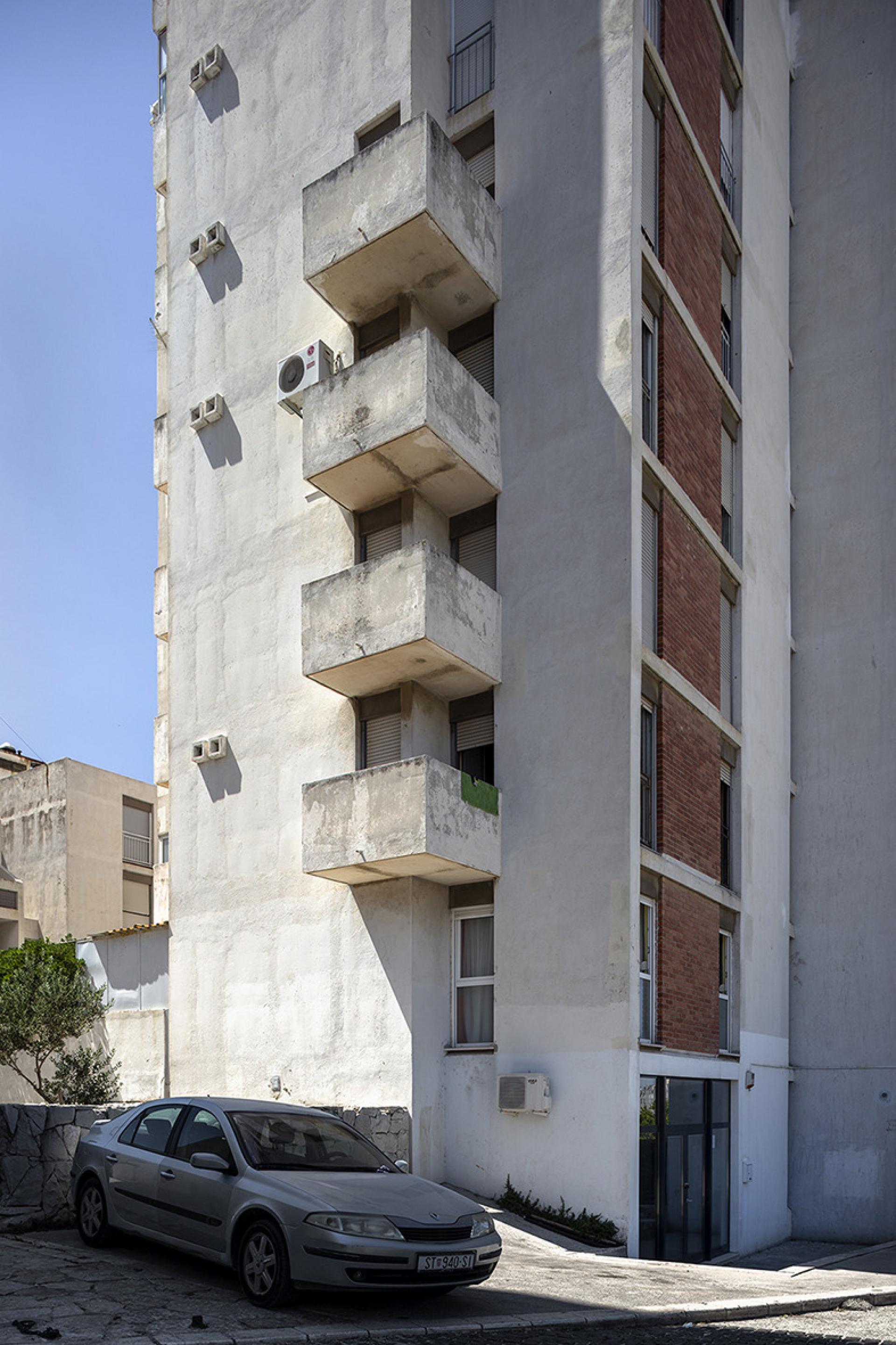
Residential building in Split by Dinko Kovačić | Photo © Roberto Conte
Without the need to gather the material for a specific publication or a pre-determined editorial project I was free to move as much as I wanted so I started to scout the buildings I was more interested to reading some books as Modernism In-Between, checked online databases as Architectuul or the Spomenik Database as well as scouting sites using satellite imagery.

Student Dormitory Goče Delčev by Georgi Konstantinovski in Skopje, Northern Macedonia | Photo © Roberto Conte
We are talking also about the unity in no border’s Europe but during your trip you have to cross many borders?
RC: I travelled for about 9,000 km, crossing each single republic that once formed Yugoslavia, but whose current divisions were pretty much shown by the 15-border crossing I had to queue, and in some cases I had some not kind inspections and questions. Of course I realized the clear differences from some place to another, but at the same time my trip was organized following a common line and I often checked architectures made by the same people but now located in different nations, in many cases neglected, when not even destroyed, like for example the monument in Knin.

The monument to the National People’s Struggle (1964-65) by Janez Lenassi and Siva Baraga in Ilirska Bistrica. | Photo © Roberto Conte
To be honest it was a very weird feeling, as an Italian born in 1980 I remember very well the borders inside the European Union and I am glad to be able to travel from one country to another, on the opposite, a country that was united as Yugoslavia is now so much divided, not only by state borders but sometimes also by ethnic differences inside the same republics.
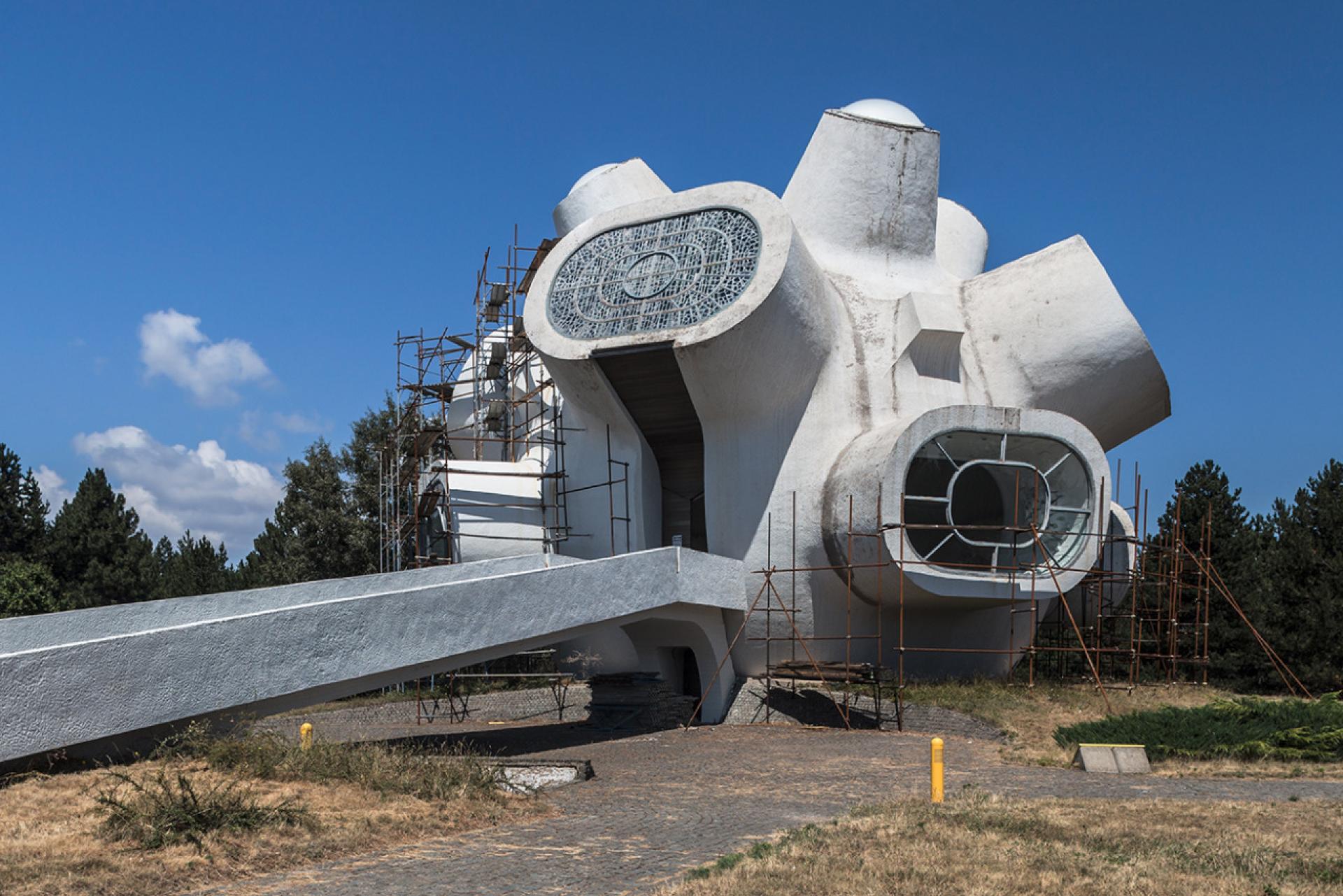
Makedonium, also known as the Monument to the Ilinden Uprising (1973-74) designed by Jordan and Iskra Grabuloska. | Photo © Roberto Conte
But in one leg of my trip, between the incredible memorial complex of Kadinjaća in Serbia and the Bratunac spomenik in Bosnia and Herzegovina, I crossed a border on the river Drina. It was a bit strange to see two fishermen right in the middle of the river, right in the very same waters and immersed in the very same landscape, but ideally located in two different countries.

Monument to the Revolution (1969-72) by Dušan Džamonja, at the Kozara mountain, Bosnia and Herzegovina. | Photo © Roberto Conte
Did you have some other encounters?
RC: Beside some recent and pretty ridiculous revival in Italy we have quite a detached relation with our flag, mainly used only for soccer events, and the need of highlighting our ethnical identity. That’s also why I found it rather interesting what happened to me between Montenegro and Kosovo. I was at the gas station in Rožaje, Montenegro, waiting for my tank to be filled. Then I heard the horns of a column of cars celebrating a wedding (as we also do quite often in Italy), but the thing is that on the first car there was a huge Serbian flag waving proudly.

The Jasenovac Monument by Bogdan Bogdanović is devoted to the victims of the Ustasha genocide during World War II. | Photo © Roberto Conte
I found it interesting that a micro-social event, such as a wedding, was considered a good opportunity to wave a flag, moreover considering that these people living in Montenegro was considering themselves more connected to another country, in this case Serbia. Then I crossed the mountain and the border with Kosovo and when I was approaching to the city of Peje I’ve seen another horning car parade, another wedding, with another flag! And, once again, the flag was about the one of another, Albania. I found these episode quite revealing of a probably diffused attitude.
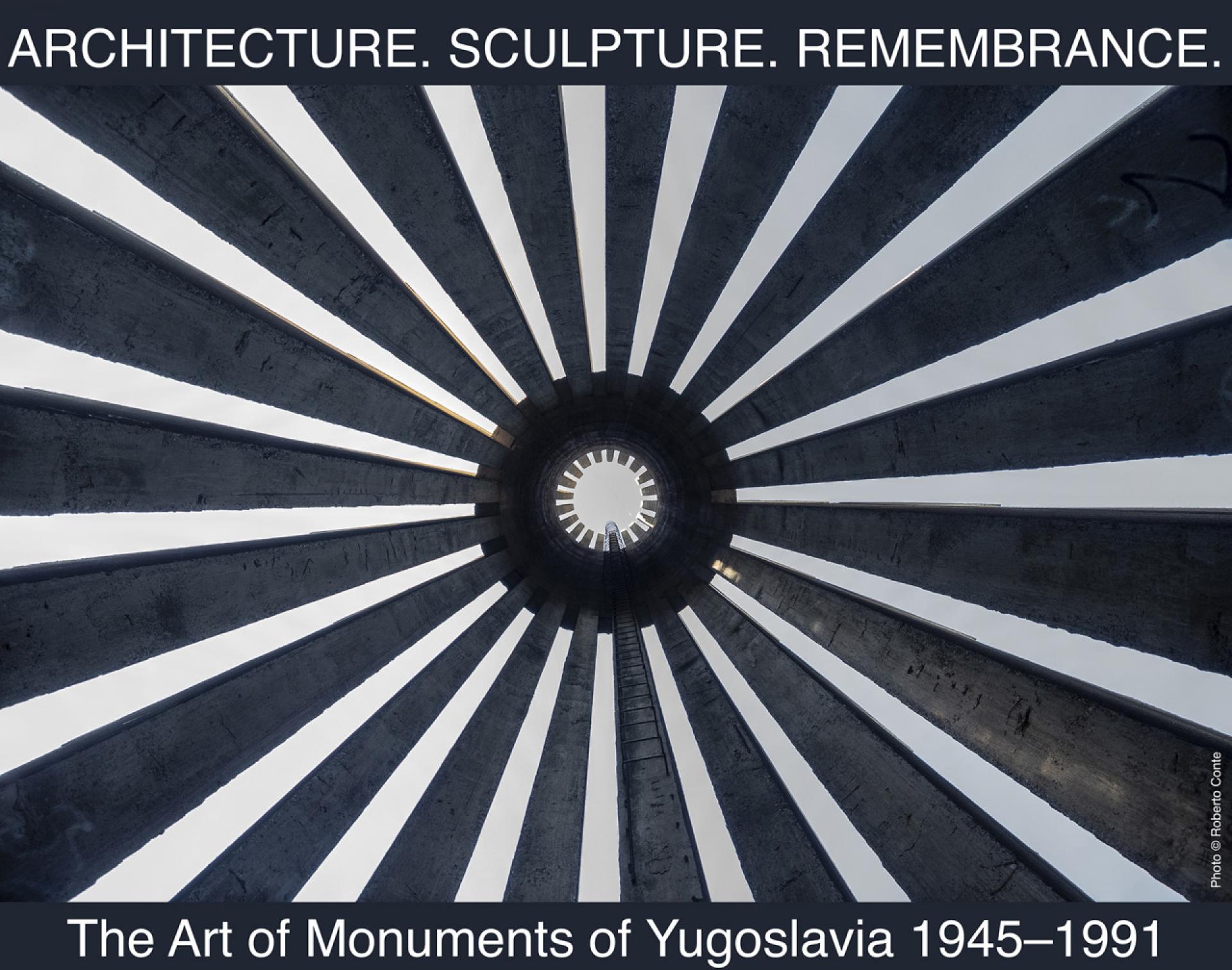
Architecture. Sculpture. Remembrance. The Art of Monuments of Yugoslavia 1945–1991.
Curators: Boštjan Bugarič, Kristina Dešman, Maja Ivanič, Špela Kuhar, Eva Mavsar, Špela Nardoni Kovač, Damjana Zaviršek Hudnik; Producer: DESSA gallery Židovska steza 4, Ljubljana, Slovenija; Organiser: DESSA gallery, ab_Arhitektov bilten, DAL, Architectuul; Mediapartner: Architectuul
>>> Also read interviews in DOMUS, ÉPÍTÉSZFORUM and WEARCH